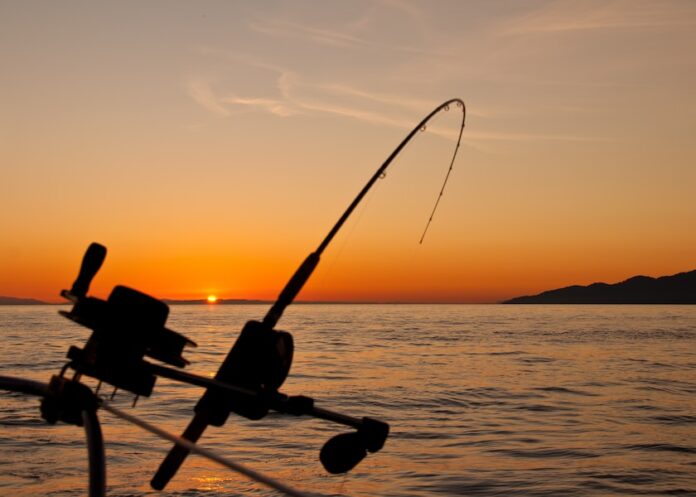
With so many options on the market, you may feel overwhelmed and not know which saltwater fishing rod you should choose. Your choice can determine how much you will enjoy your fishing trips, so be sure to pay attention to some details while choosing a saltwater fishing rod.
Saltwater Rods and Reels – Things to Consider
If you are in the process of browsing saltwater rods and reels, here are some tips on what to consider before you decide to buy one.
Power, Length, and Action
When choosing a rod, you need to consider the length, power, and action. Saltwater rods that are longer can cast much farther, but shorter rods have more power for reeling in fish. Power means how big your lure can be and how much weight the rod can handle. Action means when a rod bends while fighting a fish.
Material
Most saltwater rods are made of fiberglass or graphite. Fiberglass rods are tougher and have more power but lack sensitivity, while graphite ones are stiffer and more sensitive but can be easily damaged if used improperly.
Reels – high or low-speed?
In the case of high-speed saltwater reels, you get a gear ratio that is greater than 6:1. Thanks to that, they are very fast, as the name suggests. Low-speed reels use a ratio below 4:1 and, thanks to that, give you more power to fight a big fish. Some modern saltwater spinning reels allow you to switch between high- and low-speed, which gives you the maximum benefits of both options.
Reel Line Capacity
You can find information about reel line capacity on the body of the reel. It’s usually explained in feet or yards per pound test of line. Remember that drag pressure should be adjusted to one-third the breaking strength of the line.
Price
Of course, one of the most important factors you should have in mind is price. You can get a saltwater rod and reel combo for a very good price. You can also upscale it and add some extra features and quality if money is not a problem for you.
Never compromise quality for the price. There are many affordable options that are also durable and can serve you for years.
Baitcasting Rod and Reel
When you use a baitcasting rod, you can have more line and cast father. Also, dragging is much smoother than when using a spinning reel. While they have all those advantages, they are also much more difficult to cast, so they are dedicated to more experienced anglers.
A baitcasting reel sits on top of the rod. A baitcasting rod has smaller eyes compared to a spinning rod.
A baitcasting reel is recommended when you need big baits and long casts. In general, this type of rod is recommended for jigging and bottom fishing. Jigging is easier because you can let out and retrieve the line much more quickly.
You need to be careful while casting the line with a baitcaster. If the spool is turning faster than the line is leaving the rod, you can end up with a big tangle, known as a “bird’s nest.”
To help anglers out, most baitcasting reels have a magnetic, electronic, or centrifugal cast control. However, even with this support, you need to be very careful while casting and rely on your thumb.
Spinning Rod and Reel
A spinning reel has a fixed spool mounted below the spinning rod. This type of spool is recommended for beginners, as it is much harder to tangle the line while casting it. A spinning rod has wider guides, so it can catch the large loops of the line while casting.
For many anglers, spinning reels are a better option for working lures. You can change most spinning reels from left-handed to right-handed, which can come in handy when you are tired.
One of the problems that spinning reel users can experience is “wind knots.” These knots are located around loops and happen when the line is not retrieved under pressure. Because of that, you might want to add a small swivel between the leader and the line to prevent tangling.
Saltwater Trolling Rod
This reel is an upgraded version of a baitcasting reel. It has a revolving spool reel on top of the rod. They usually use a lever drag system, not a star drag. Because of that, you can set the maximum drag and adjust the amount of pressure with a lever.
A saltwater trolling reel carries a lot of lines and has a sturdy design, which makes it perfect for fighting huge fish.
Trolling rods are shorter and burlier than casting rods. They have a cut-down butt, which allows you to support them on a fighting belt or chair. The line is usually supported by roller guides or high-strength round eyes.
You can choose a saltwater trolling rod based on the category of the line that they support. If you want to catch a smaller fish, such as white marlin, dolphin, or sailfish, you need a 20-pound. If you are into bigger species, such as bluefin tuna or billfish, you need a 130-pound option.
If you fish in a stand-up position, you need a shorter rod with a longer butt. If you prefer a fighting chair, opt for a longer rod with a shorter butt.
Summary
As you can see, there are many factors to consider while choosing a saltwater fishing rod and reel. First of all, you need to think about your fishing style and needs. Do you want to catch a smaller or a bigger fish? Do you have a lot of experience, or are you just starting your fishing adventure? What is your budget?
Once you find answers to these questions, it will be much easier for you to pick up the right combo. Be sure to come back to our article whenever you need to check information about saltwater fishing rods.

